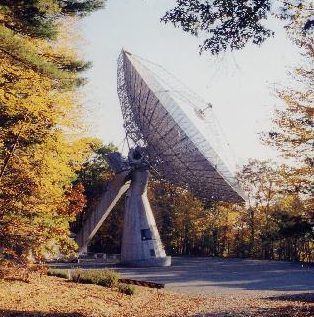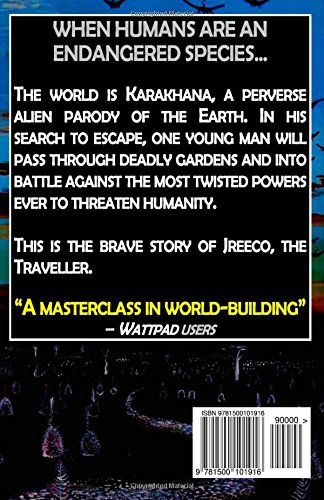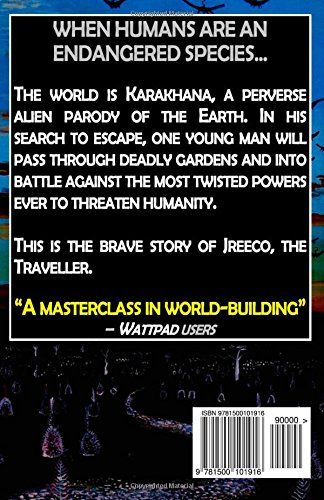Tag: extraterrestrial life

Where are the aliens? Solutions to Fermi Paradox
The Fermi Paradox poses an age-old question: With light and radio waves skipping across the galaxy, why has there never been any convincing evidence of other life in the universe—or at least another sufficiently advanced civilization that uses radio? After all, evidence of intelligent life requires only that some species modulates a beacon (intentionally or unintentionally) in a fashion that is unlikely to be caused by natural phenomena.
The Fermi Paradox has always fascinated me, perhaps because SETI spokesperson, Carl Sagan was my astronomy professor at Cornell and—coincidentally—Sagan and Stephen Spielberg dedicated a SETI radio telescope at Oak Ridge Observatory around the time that I moved from Ithaca to New England. It’s a 5 minute drive from my new home. In effect, two public personalities followed me to Massachusetts.
What is SETI?
In November of 1984, SETI was chartered as a non-profit corporation with a single goal. In seeking to answer to the question “Are we alone?” it fuels the Drake equation by persuading radio telescopes to devote time to the search for extraterrestrial life and establishing an organized and systematic approach to partitioning, prioritizing, gathering and mining signal data.

Many of us associate astronomer Carl Sagan and Hollywood director, Stephen Spielberg, with SETI. They greased the path with high-profile PR that attracted interest, funding and radio-telescope partnerships. But, they were neither founders nor among the early staff. The founders, John Billingham and Barney Oliver assembled a powerhouse board of trustees, which included Frank Drake (Sagan’s boss at Cornell), Andrew Fraknol, Roger Heyns and William Welch. Among first hires were Jill Tarter, Charles Seeger, Ivan Linscott, Tom Pierson and Elyse Murray (now Elyse Pierson). Of course, Carl Sagan was advocated for the search for extraterrestrial intelligence, and he joined SETI as Trustee near the end of his life.
In The Birth of SETI, Tom Pierson reminisces about the early days of SETI. Also check out SETI pioneer, Jill Tarter, explaining how to write a message that will be understood by an alien civilization.
There is a lot of lore and love surrounding SETI, because its goal pulls directly on our need to understand our place in the cosmos. This week, SETI is going through a bit of transformation as it prepares for the next chapter in the search. So, where are the aliens? Are the funds and brainpower spent on peeping for aliens an investment in our own civilization, a form of entertainment, or a colossal waste?
This fascinating video offers 10 plausible solutions to Fermi Paradox. Fascinating, that is, if you can get past John Michael Godier’s dry, monotone narration. But. take my word for it. The concept and the content is exciting.

‘A struggle between humans and nature’
By Harry J. Bentham - More articles by Harry J. Bentham
Originally published at the Institute for Ethics and Emerging Technologies on 17 July 2014

Political futurism, ethics energized by sci-fi
Since Maquis Books published The Traveller and Pandemonium, a novel authored by me from 2011–2014, I have been responding as insightfully as possible to reviews and also discussing the book’s political and philosophical themes wherever I can. Set in a fictional alien world, much of this book’s 24 chapters are politically themed on the all too real human weakness of infighting and resorting to hardline, extremist and even messianic plans when faced with a desperate situation.
The story tells about human cultures battling to survive in a deadly alien ecosystem. There the human race, rather than keeping animals in cages, must keep their own habitats in cages as protection from the world outside. The human characters of the story live out a primitive existence not typical of science-fiction, mainly aiming at their own survival. Technological progress is nonexistent, as all human efforts have been redirected to self-defense against the threat of the alien predators.
Even though The Traveller and Pandemonium depicts humanity facing a common alien foe, the various struggling human factions still fail to cooperate. In fact, they turn ever more hostilely on each other even as the alien planet’s predators continue to close in on the last remaining human states. At the time the story is set, the human civilization on the planet is facing imminent extinction from its own infighting and extremism, as well as the aggressive native plant and animal life of the planet.
The more sinister of the factions, known as the Cult, preaches the pseudo-religious doctrine that survival on the alien world will only be possible through infusions of alien hormones and the rehabilitation of humanity to coexist with the creatures of the planet at a biological level. However, there are censored side effects of the infusions that factor into the plot, and the Cult is known for its murderous opposition to anyone who opposes its vision.
The only alternative seems to be a second faction, but it is equally violent, and comes under the leadership of an organization who call themselves the Inquisitors. In their doctrine, humans must continue to isolate themselves from the alien life of the planet, but this should extend to exterminating the alien life and the aforementioned Cult that advocates humans transmuting themselves to live safely on the planet.
I believe that this aspect of the story, a battle between two militant philosophies, serves well to capture the kind of tension and violent irrationality that can engulf humanity in the face of existential risks. There is no reason to believe that hypothetical existential risks to humanity such as a deadly asteroid impact, an extraterrestrial threat, runaway global warming, alien contact or a devastating virus would unite the planet, and there is every reason to believe that it would divide the planet. It is often the case that the more argument there is for authority and submission to a grand plan in order to survive, the greater the differences of opinion and the greater the potential for divergence and conflict.
Social habits, politics, beliefs and even the cultural trappings of the different human cultures clinging to the alien planet are fully represented in the book. In all, the story has had significant time and care put into refining it to create a compelling and believable depiction of life in an inhospitable parallel world, and readers remarked in reviews that it is a “masterclass in world-building”.
The central character of the story, nicknamed the Traveler, together with his companion, do not really subscribe to either of the extremist philosophies battling over humanity’s fate on the alien planet, but their ideas may be equally strange. Instead, they reject the alien world in which they live. With an almost religious naïveté, they are searching for a “better place”. It is through this part of the plot that the concepts of religious faith and hope are visited. Of course, at all times the reader knows they are right – there is a “better place” only not the religious kind. Ultimately, the quest is for Earth, although the characters have never heard of such a place and have only inferred that it might somehow exist and represent an escape from the hostile planet where they were born.
Reviewers have acknowledged that by inverting the relationship of humanity and nature so that nature is on the advance and humans are receding and diminishing in the setting of this science-fiction novel, a unique and compelling setting is created. I believe the story offers my best exploration of a number of political and ethical themes, such as how people feel pressured to choose between hardline factions in times of extreme desperation and in the face of existential threats. Science fiction is a worthy medium in which to express and explore not only the future, but some of the most troubling political and philosophical scenarios that have plagued humanity’s past.
Expect Confirmation of Extraterrestrial Life by 2047
Recently Seth Shostak of the SETI Institute, wrote an article in the Huffington Post How to Find Extraterrestrial Life. He had proposed that the search for extraterrestrial life was a three-way horse race. According to Shostak:
(1) Discover Life Nearby: This is the search for life in our solar system.
(2) Sniff It Out: Do the sort of spectral analysis that might detect atmospheric gases caused by biology.
(3) Eavesdrop On ET: Otherwise known as SETI, is the effort to detect radio signals or laser flashes from technically savvy extraterrestrials.
Neat, Shostak has set the frame work for further dscussions. Note that the (1) is the search for the existance of life based molecules. That (2) is the search for life forms, whether past or present. And (3) is the search for extraterrestrial intelligence.
He says that a priori all are equally likely to be successful. Lets think again.
With respect to (1) Discover Life Nearby, lets look at the record. Using the Mars Exploration Rovers, Spirit & Opportunity, as examples, Spirit which was 2.3m wide, covered 8.81 km over 581 sols (a Martian day that is approximately an Earth day), that is approximately 19 m2 per day. Given that the surface of Mars is 144,798,500 km2 it will take Spirit about 7.6 × 1012 days or 208,340,844 centuries, to examine the total surface of Mars. That is, assuming randomness, and that life did exist on Mars in the past, the quick & dirty probability of finding life on Mars on any day with current technology is 1.3 × 10-13. We have a better idea of Mars. It is mostly barren. However, not a clue about the Europa the moon of Jupiter, that is believed to have oceans beneath its ice.
With current projections it likely that NASA will have a satellite at Europa in the 2020–2030 time frame.
So, we can make 2 types of guesses. Assuming that life started on Europa some millions ago, then the probability (from a detection perspective) of finding life on Europa is good, close to 1. However, if Europa is a liquid version of Mars, then the probability is on the order of 1 × 10-13.
Therefore, the time frame for discovery of extraterrestrial life by (1) Discover Life Nearby, is about 2025 assuming no budgets cuts or other re-prioritizations.
With respect to (2) Sniff It Out, scientists estimate that there are about 1 x 1010 Earth like planets in our Milky Way. Lets assume that the Goldilocks Zone is a necessity. Using Pluto as the outer extreme of planets in a Star Local system, and Mars and Venus as boundaries of our Goldilocks Zone, then the approximate probability of finding one of these Earth-like planets in the Goldilocks Zone is 2.89 × 10-2. This reduces the number of Earth-like planets capable of supporting life to 289,340,102. Or the probability of finding life on at least one of these planets (assuming life is present) is at least 3.45 × 10-9.
I would estimate that the time frame for detecting extraterrestrial life is between today, and 35 years from now to 2047.
It could be any day now as the Dutch using the Very Large Telescope in the Chilean Andes have detected carbon monoxide on a planet hugging the star Tau Bootis that is 51 light-years away. The other end of my estimate is 2047. This is because developing a technology like the James Webb telescope was 30 years in the making.
So (2) Sniff It Out, has a better chance of finding evidence of life than (1) Discover Life Nearby.
Now how about (3) Eavesdrop On ET? As the author of the 12-year study An Introduction to Gravity Modification, it is slim. Sorry, Tarter, Shostak and all of you at the SETI Institute. But wait, I haven’t finished.
Look at our civilization. In 1895 Guglielmo Marconi proved that long distance radio transmission was possible. In 117 years we have exponentially evolved our technological sophistication to what it is today, 2012.
As the author of the 12-year study An Introduction to Gravity Modification I have proposed (see page 195) the existence of subspace, where everything is probabilistic, and light speed is not a restriction. Therefore, if confirmed, there is the strong possibility that by 2025/2035 this planet will go radio silent, because all our transmissions will be through subspace.
That is, the window to observe a radio intelligent extraterrestrial civilization is about 100 to 150 years, then they go silent. 100–150 years is an immensely thin slice or duration compared to the distances of stars even within our own galaxy, the Milky Way. Or the probability of detecting extraterrestrial radio transmissions within our own galaxy is approximately 1.25 × 10-6. It is actually a little better than this but I am using quick & dirty for this blog posting, and this will do. This is much better than a posteriori 1 × 10-13 for (1) Discover Life Nearby and 3.45 x 10-9 for (2) Sniff It Out.
So SETI, keep eavesdropping, and we can expect confirmation of Extraterrestrial Life by 2047 latest.
—————————————————————————————————
Benjamin T Solomon is the author & principal investigator of the 12-year study into the theoretical & technological feasibility of gravitation modification, titled An Introduction to Gravity Modification, to achieve interstellar travel in our lifetimes. For more information visit iSETI LLC, Interstellar Space Exploration Technology Initiative
Artifacts in the Solar System
One way that astronomers and astrobiologists search for life in the galaxy is observation of rocky planets orbiting other stars. Such planets may contain an atmosphere, liquid water, and other ingredients that are required for biological life on Earth. Once a number of these potentially inhabited planets have been identified, the next logical step in exploration is to send remote exploratory probes to make direct observations of these planets. Present-day study of other planetary systems is so far limited to remote observation with telescopes, but future plans for exploration include the design and deployment of small robotic exploratory spacecraft toward other star systems.
If intelligent, technological extraterrestrial life exists in the galaxy, then it is conceivable that such a civilization might embark on a similar exploration strategy. Extraterrestrial intelligent (ETI) civilizations may choose to pursue astronomy and search for planets orbiting other star systems and may also choose to follow-up on some of these targets by deploying their own remote exploratory spacecraft. If nearby ETI have observed the Solar System and decided to pursue further exploration, then evidence of ETI technology may be present in the form of such exploratory probes. We refer to this ETI technology as “non-terrestrial artifacts”, in part to distinguish these plausible exploratory spacecraft from the flying saucers of science fiction.
In a recent paper titled “On the likelihood of non-terrestrial artifacts in the Solar System”, published in the journal Acta Astronautica (and available on arXiv.org as a preprint), Jacob Haqq-Misra and Ravi Kopparapu discuss the likelihood that human exploration of the Solar System would have uncovered any non-terrestrial artifacts. Exploratory probes destined for another star system are likely to be relatively small (less than ten meters in diameter), so any non-terrestrial artifacts present in the Solar System have probably remained undetected. The surface and atmosphere of Earth are probably the most comprehensively searched volumes in the Solar System and can probably be considered absent of non-terrestrial artifacts. Likewise, the surface of the moon and portions of Mars have been searched at a sufficient resolution to have uncovered any non-terrestrial artifacts that could have been present. However, the deep oceans of Earth and the subsurface of the Moon are largely unexplored territory, while regions such as the asteroid belt, the Kuiper belt, and stable orbits around other Solar System planets could also contain non-terrestrial artifacts that have so far escaped human observation. Because of this plenitude of nearby unexplored territory, it would be premature to conclude that the Solar System is absent of non-terrestrial artifacts.
Although the chances of finding non-terrestrial artifacts might be low, the discovery of ETI technology, even if broken and non-functioning, would provide evidence that ETI exist elsewhere in the galaxy and have a profound impact on humankind. This is not to suggest that the search for non-terrestrial technology should be given priority over other astronomical missions; however, as human exploration into the Solar System continues, we may as well keep our eyes open for ETI technology, just in case.

